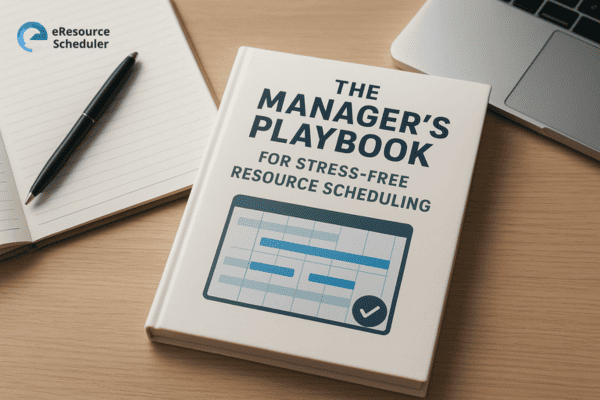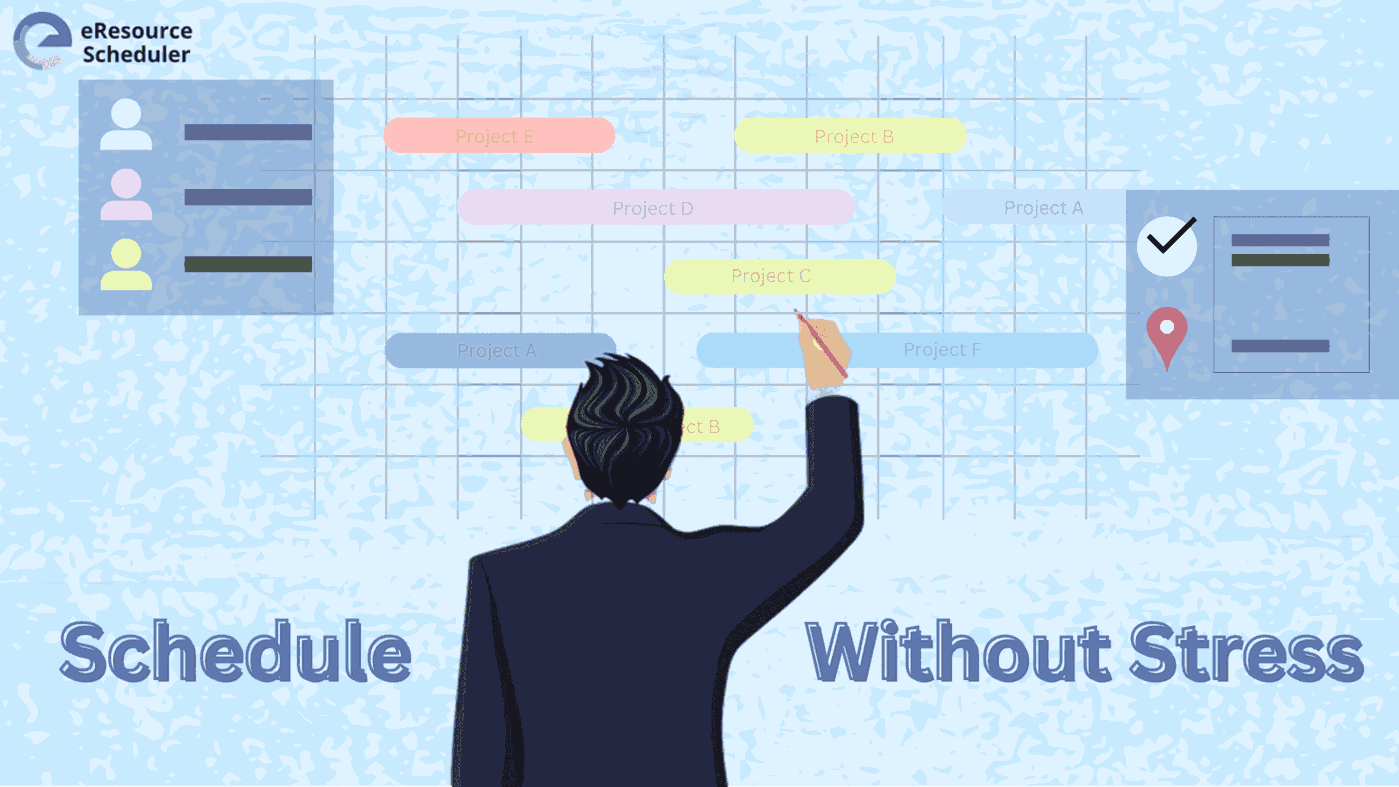Why Scheduling Is So Stressful
The stress doesn’t come from work itself; instead, it comes from broken scheduling practices:
- Overbooking disguised as efficiency: Teams look “productive” on paper but are actually drowning. Without smart resource allocation, it’s a recipe for burnout.
- Manual scheduling chaos: Spreadsheets weren’t designed to manage projects. Unlike resource scheduling software, they don’t adapt to constant change.
- Blind spots everywhere: Without real-time resource visibility, managers can’t see who’s free, who’s overbooked, or where capacity gaps exist.
eRS was built to solve exactly these headaches by replacing guesswork with clarity.

Rule #1: Visibility Is Your Foundation
Stressful schedules thrive in the dark. If you can’t see workloads clearly, you’ll always be a step behind. eRS gives managers real-time resource visibility at every level. Need to know who is at capacity? Which team member can absorb last-minute work? Are contractors booked next quarter? It’s all there in one dashboard.
Instead of asking “Who’s available?” you already know. That’s the difference between scrambling and managing.
Rule #2: Spreadsheets Don’t Scale
Spreadsheets are familiar, but they are static and error-prone. When your projects grow, so does the chaos.
With eResource Scheduler, managers ditch Excel for drag-and-drop scheduling that’s faster, cleaner, and conflict-free. Want to reassign work? Just drag. Need recurring bookings? Done. The system even flags overallocation instantly.
That’s the kind of flexibility spreadsheets will never offer—and the kind of efficiency managers absolutely cannot live without.
Rule #3: Balance Workloads with Data
Balanced workloads mean happier employees and smoother projects. Overloaded staff miss deadlines; underutilized staff disengage.
eRS helps you master resource allocation strategies by showing workload heatmaps and utilization charts. Managers can spread assignments fairly, ensuring no one’s burning out while others coast.
This isn’t just resource allocation but smart resource scheduling software in action, keeping productivity high without tipping into chaos.
Rule #4: Always Be Scenario-Ready
Projects shift. Priorities change. People get sick. Stress-free scheduling isn’t about preventing change—it’s about adapting to it.
eRS shines here with what-if scenario planning. Managers can model multiple versions of a schedule and pick the best outcome before committing. That means less disruption, less guesswork, and a lot less stress.
In scheduling, flexibility is a strength. eRS gives you both.
Rule #5: Communicate Instantly
Even the best schedule fails if your team doesn’t know about it. Last-minute updates sent too late lead to confusion and stress.
That’s why eRS includes a live scheduling dashboard. Everyone sees updates in real time, with instant notifications. Whether it’s a project shift or a deadline change, no one is left guessing.
Transparency isn’t a luxury—it’s the backbone of stress-free scheduling.
Rule #6: Stop Thinking Short-Term
Planning only for this week is how stress multiplies. Smart managers forecast.
eResource Scheduler lets you see months ahead. Can your current team handle three big projects next quarter? Do you need freelancers or permanent hires? Forecasting with eRS ensures your team never runs into capacity blind spots.
It’s not about reacting to problems—it’s about preventing them.
Rule #7: Trust Data, Not Gut
Managers love instincts, but instincts can’t handle complex projects. Data can.
eRS, as a full resource scheduling software, tracks utilization rates, project timelines, and allocation patterns. Management reports turn into insights you can act on. Instead of “I think we’re fine”, you’ll know with certainty whether your team is stretched too thin.
That certainty is what makes stress-free scheduling possible.



